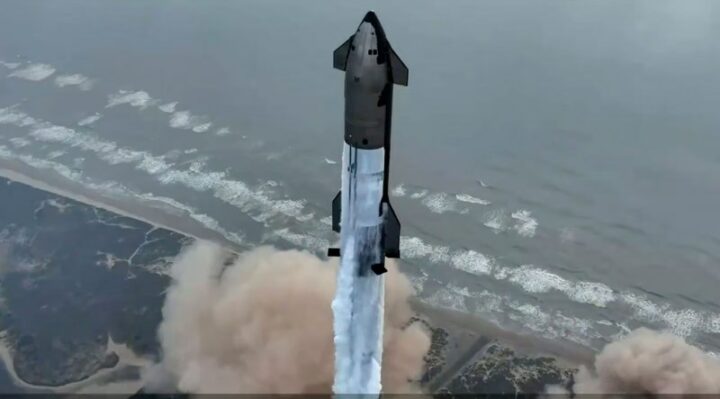
Test 4 of Elon Musk’s super rocket, which happened on June 5, was even more impressive than Test 3 of the SpaceX Starship. It resembled something out of a science fiction movie taking place in real life. The fourth test largely achieved the goals for the launch vehicle that is intended to return humans to the moon, Mars, and beyond.
The Super Heavy stage’s smooth landing in the Gulf of Mexico and the Starship’s soft landing in the Indian Ocean were the test flight’s two main achievements. Musk said on X that the Starship lost many of its heat shield tiles and that one of its control flaps was torn. However, the flight was a total triumph. SpaceX has kindly provided an overview of its achievements.
Providing views never previously seen in any space trip for those watching the flight on a live feed is one accomplishment that SpaceX does not cite but is nevertheless noteworthy. Following its separation from the Starship, the Super Heavy’s first stage made a gentle descent onto the Gulf of Mexico while generating a tail of fire. With the help of Starlink, it was possible to witness a spacecraft’s reentry without experiencing a blackout as Starship descended towards the Indian Ocean, surrounded by vibrant plasma flares.
To say that the world was impressed by the Starship’s fourth test flight would be an understatement. Even China, the West’s primary competitor in the space race 2.0, was in disbelief at what SpaceX had achieved. Starship “surpassed the space shuttle to become the largest and most massive re-entry spacecraft in human history,” according to state-owned China Space News.
“Congratulations @SpaceX on Starship’s successful test flight this morning! We are another step closer to returning humanity to the Moon through #Artemis — then looking onward to Mars.” Nelson wrote on X.
“Today was a great day for humanity’s future as a spacefaring civilization! Nothing unites us more than working together towards inspiring objectives.” SpaceX CEO Elon Musk said in a congratulations to the crew that completed the test flight.
Notwithstanding the praise, the test flight was only a little step toward the day when fleets of starships will visit and depart from the moon, Mars, and other locations around the solar system.
Musk is already getting ready for what could be July’s Starship test. That date is more likely than not since the Federal Aviation Administration would not look into the tragedy involving Test Flight 4. The flaps will be moved to a less-prone location where the forces of reentry won’t likely harm them, and the heat shield tiles will be more durable.
After the Super Heavy detaches from the Starship, Musk also intends to bring it down to the launch pad. The enormous rocket will be captured by the Megazilla arms in midair, and they will gently lower it back to the launch site. Once perfected, the maneuver will significantly contribute to the massive rocket’s reusable nature.
Other significant junctures in the Starship’s evolution into a functional vehicle include as follows:
- putting the Starship into orbit, keeping it in low Earth orbit, and finally bringing it back whole for further use.
- Refueling the Starship while it is in Earth’s orbit will necessitate launching many Starships in tanker configuration.
- Take off, land on the moon, and then take off once more.
- Take off, land, fly to Mars, and then fly back to Earth.
Starship is amazing for reasons other than its spectacular takeoff, orbit, and landing. The potential it holds for the future makes it inspirational.
This future entails mining missions to asteroids, a settlement on Mars, and outposts on the moon. Earthlings will travel to space, not just to explore its mysteries but also to search for and return with its bountiful riches.
In the same way that the speeding galleon of the sixteenth century welcomed immigrants wanting a fresh start across the oceans and merchant adventurers seeking wealth, the Starship is hoped to do the same for humans in space in the twenty-first century. Space exploration is more than simply a fantastic hobby or a way for superpowers to compete. It is a method of utilizing space’s natural and energetic resources to address a number of issues related to poverty and environmental degradation.
Elon Musk frequently discusses his goal of creating a multiplanet human species. He’s found a means, somehow, to give that dream shape.
Frequently writing about space policy, Mark R. Whittington has authored several books on space exploration, including “The Moon, Mars and Beyond,” “Why is America Going Back to the Moon?” and a political study titled “Why is It So Hard to Go Back to the Moon?” Curmudgeons Corner is his blog.



